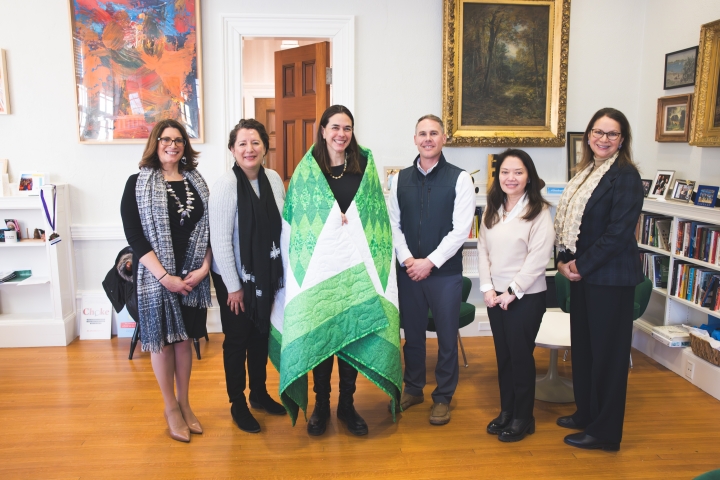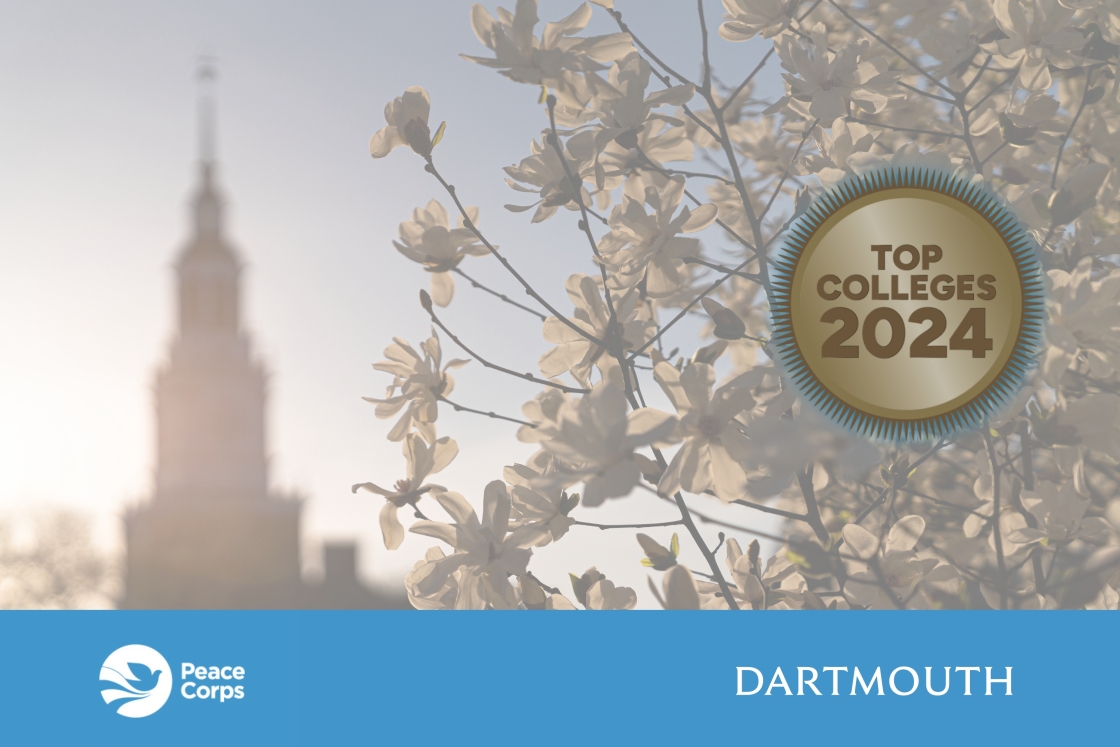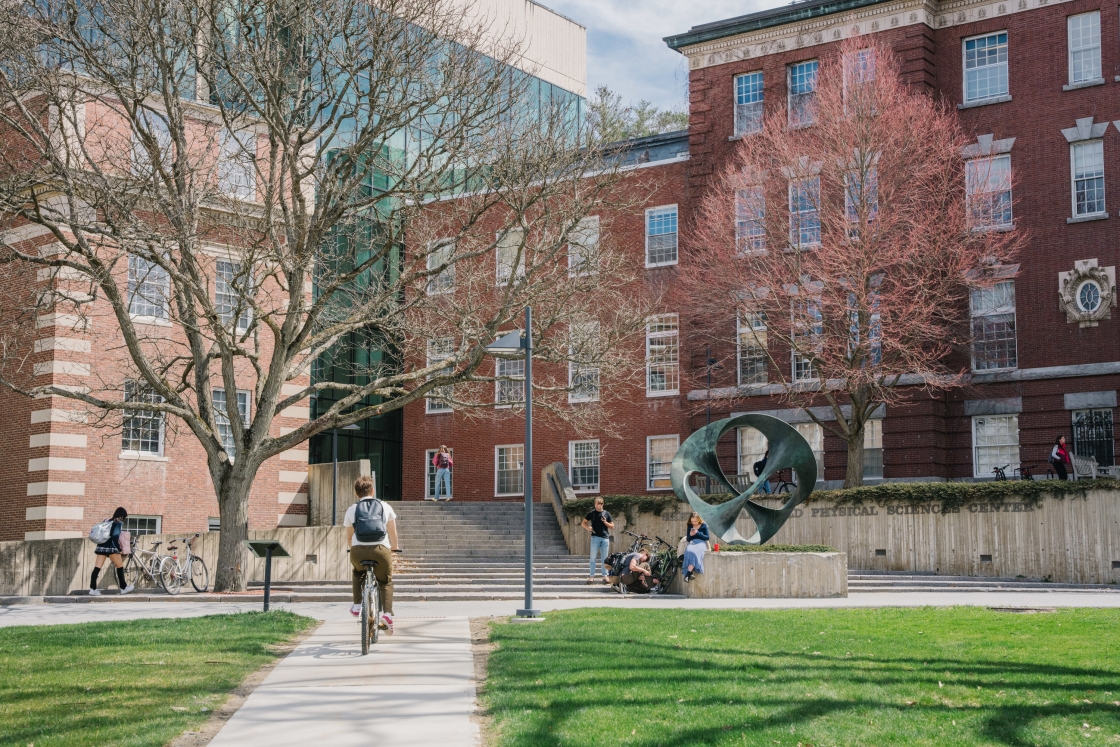The Native American Visiting Committee was on campus recently to meet with students, faculty, staff, and senior leaders, including President Sian Leah Beilock, about matters of vital concern to Native American students and their tribal communities.
The presidential advisory committee, which is made up of Native and non-Native alumni, has advised Dartmouth leadership on Native American affairs since 1972, when President John Kemeny established the group as part of Dartmouth’s effort to recommit itself to its charter mission “for the education and instruction of youth of the Indian tribes in this land.”
“This was a highly productive visit that is helping Dartmouth move forward on a number of collaborative initiatives, including the upcoming Tribal Leadership Academy,” says President Beilock, who met with the NAVC during the Feb. 8-9 visit.
“The advice and support of the Native American Visiting Committee is invaluable as Dartmouth continually seeks ways to better support Native students and build relationships with the tribal nations to whom we have a profound responsibility going back to our earliest history. I’m proud and grateful for the commitment these alumni have shown to this institution, our students, and their home communities.”
“We see our work as making sure that Dartmouth is providing the best possible opportunities for Native American students,” says NAVC Co-Chair Casey Lozar ’03, an enrolled member of the Confederated Salish and Kootenai Tribes and vice president and director of the Center for Indian Country Development at the Federal Reserve Bank of Minneapolis.
“Indigenous students are often citizens of their own nations. That recognition is important—that we belong to these communities, and our communities are often sending and supporting our Indigenous students,” says NAVC Co-Chair Kalina Newmark ’11, an enrolled member of the Tulita Dene Band in the Northwest Territories of Canada who is a brand manager at Nestlé. “NAVC’s role is really about how do we keep trust with those nations to take care of their young leaders—to be of service not only to the students, but to our nations and our future.”
During this year’s visit, NAVC members heard from faculty, students, and staff on issues ranging from student mental health to the creation of the Tribal Leadership Academy—a first-of-its-kind initiative, which Beilock announced during her inaugural address.
The academy is “leveraging Dartmouth’s expertise and commitment to Indian Country to support tribal leaders who are leading these sovereign nations around the country,” says Lozar, who will lead a session on developing local tribal economies when the first cohort convenes for a week in August. Other topics will include health care delivery, tribal law enforcement, inter-governmental relations, and natural resource management.
The committee also received an update from the Working Group on Human Remains, part of Dartmouth’s response to the 2022 discovery of Native American ancestral remains on campus.
“It’s a devastating topic,” says Newmark, who says NAVC was able to advise the institution on appropriate measures to help the community heal. “The good thing is that NAVC was a partner from the beginning. It shows the urgency that Dartmouth felt to do something. They created the opportunity for us to be a partner and help navigate a difficult situation. I’m hopeful that they will continue to do that.”
In addition to the committee’s February visit, Newmark and Lozar visited with Beilock this past fall.
The highlight of the full committee’s visit every year is the opportunity for the group to meet with Native and Indigenous students, says Lozar. This year the committee attended a community dinner for students at the Native American House.
“Being able to share a meal with the students and get to know them helps them to understand the work that we do,” Lozar says. “It’s a way to underscore that many Native alumni have gone through this experience, and there’s an incredible amount of opportunity after graduation. They’re going to be a part of this special group of Native leaders around the country that have this connection.”
Newmark, who was president of Native Americans at Dartmouth, remembers the impact meeting with NAVC members had on her as a student. “When I reflect on my time as a student, I couldn’t always see what success looked like,” she says. “The alumni on NAVC are quite diverse in terms of gender representation, career representation, and so on. I think that’s very purposeful.”
Lozar says he is pleased with the work Dartmouth is doing to help Native American and Indigenous students make a successful transition to college.
“I came from a town of maybe 2,500 on a rural reservation in Montana, and it was a major cultural shock just coming to campus and meeting people with very different backgrounds and worldviews,” Lozar says. “College leaders understand that, and they’re working diligently to provide students the services they need in real time, knowing that their needs are unique.”
The Department of Native American and Indigenous Studies and the Native American Program play an important role in helping students adjust to and succeed at Dartmouth.
“The Native American Program is often considered a safe space for indigenous students—a place where they can be themselves,” says Newmark. NAP recently hired Adria Brown, an enrolled member of the Chickasaw Nation, as its new director, and a search is underway for an assistant director. And Lozar and Newmark say that other campus offices can do more to help Native students to feel at home.
“It’s not the role of the NAP to provide every service,” Newmark says. “When you think about Dick’s House and mental health services or the dean’s office, there are these pivotal offices on campus that should be also serving our students, but students will often go to the NAP first because that’s where they feel the safest. Other offices need to have that cultural understanding of our communities and provide that safe space. We’re on the path, and we want Dartmouth to continue to invest in that.”
Dartmouth’s formal commitment with Native American communities goes back to its founding in the 18th century, when, at the behest of Dartmouth founder Eleazar Wheelock, the Mohegan minister and scholar Samson Occom traveled to Great Britain to raise funds for a school that he believed would serve Indian students—a promise Dartmouth only began to live up to in the 1970s. Today Dartmouth has more than 1,300 Native alumni and over 200 Indigenous students, representing more than 70 tribal communities.
In 2022, Dartmouth repatriated Occom’s papers to the Mohegan Tribe and received a hand-beaded wampum belt symbolizing Dartmouth’s living relationship with the tribe and its charter commitment to educating Native and Indigenous students.
President Emeritus Philip J. Hanlon formally passed the wampum belt to President Beilock at her inauguration in 2023. For the first time in Dartmouth history, Mohegan representatives—including Mohegan Vice Chairwoman Sarah Harris ’00, a direct descendant of Samson Occom and a member of NAVC—participated in the inauguration ceremony, before which they presented Dartmouth and Beilock with a pendant on behalf of the tribe.


